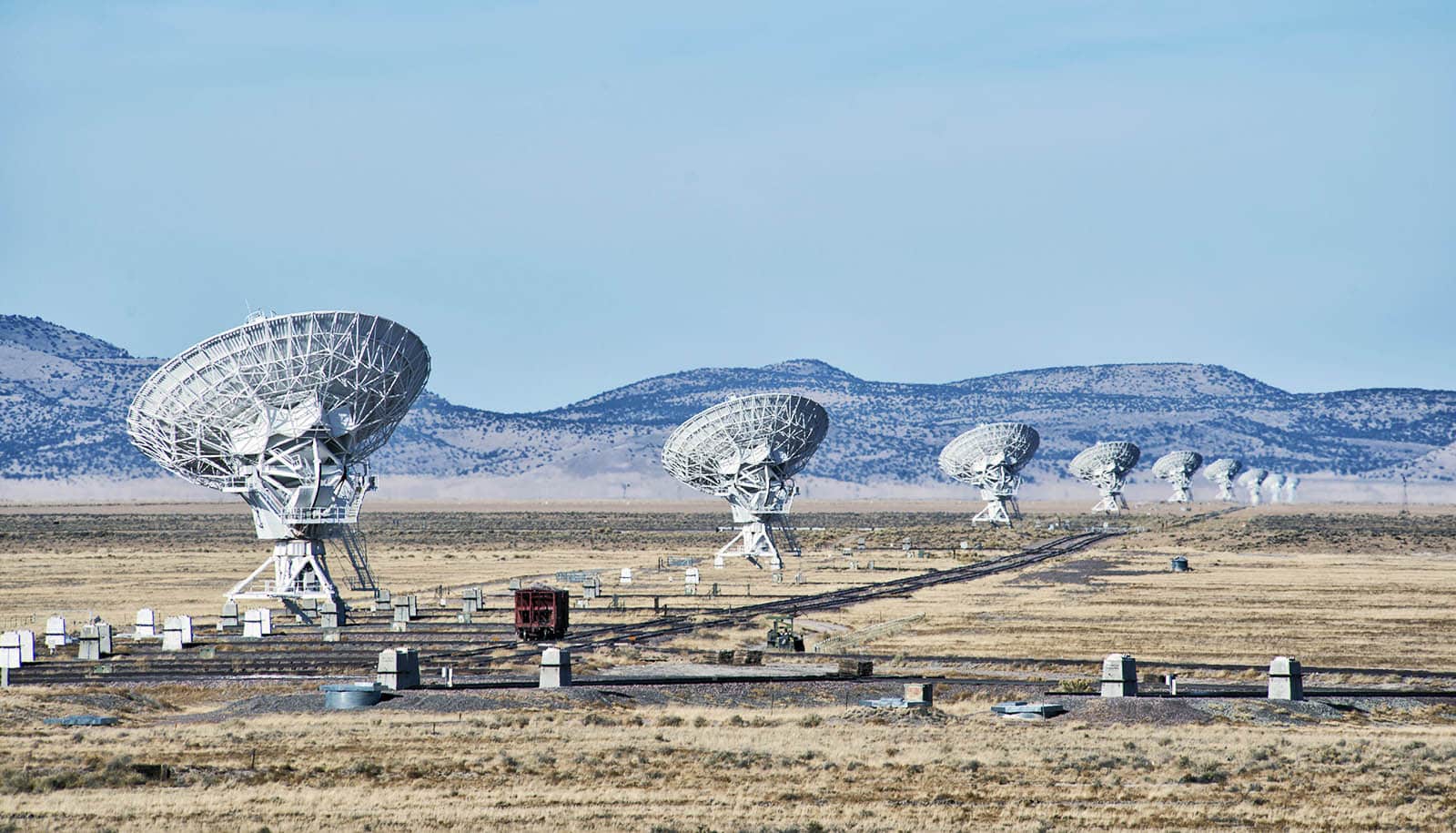Researchers have uncovered the source of mysterious cosmic radio waves known as “fast radio bursts.” The bursts were first seen about 10 years ago, and scientists suspected they were coming from within the Milky Way galaxy, or from cosmic neighbors.
Astronomers now confirm the fast radio bursts, or FRBs, are long-distance flashes from across the universe—more than 3 billion light-years away, according to a new report published in Nature. They also published companion papers in the Astrophysical Journal Letters.
“Now we can do real astrophysical analysis on the burst source and the galaxy that harbors it.”
“These radio flashes must have enormous amounts of energy to be visible from over 3 billion light-years away,” says lead author Shami Chatterjee, a senior research associate in astronomy at Cornell University.
Astronomers appreciate this breakthrough news, says James Cordes, an astronomy professor at Cornell: “Now we can do real astrophysical analysis on the burst source and the galaxy that harbors it.”
In November 2012, Cornell astronomers using the Arecibo Observatory captured its first FRB—which lasted three one-thousandths of a second. It was called FRB 121102. Until then, only the Parkes Radio Telescope in New South Wales, Australia, had discovered a handful of previously known FRBs.
Rising just ahead of the winter constellation Orion, FRB 121102 has a home in the pentagon-shaped constellation Auriga.
“There’s a patch of the sky from which we’re getting this signal—and the patch of the sky is arc minutes in diameter. In that patch are hundreds of sources. Lots of stars, lots of galaxies, lots of stuff,” says Chatterjee.
“The host galaxy for this FRB appears to be a very humble and unassuming dwarf galaxy, which is less than 1 percent of the mass or our Milky Way galaxy,” says Shriharsh Tendulkar, a McGill University postdoctoral researcher and one of the contributors to the Nature paper. “That’s surprising. One would generally expect most FRBs to come from large galaxies which have the largest numbers of stars and neutron stars—remnants of massive stars.
“This dwarf galaxy has fewer stars, but is forming stars at a high rate, which may suggest that FRBs are linked to young neutron stars. There are also two other classes of extreme events—long duration gamma-ray bursts and superluminous supernovae—that frequently occur in dwarf galaxies, as well. This discovery may hint at links between FRBs and those two kinds of events.”
In addition to detecting the bright bursts from FRB 121102, the observations also revealed an ongoing, persistent source of weaker radio emission in the same region.
After 50 hours of staring
To locate the source of this sporadic flash, astronomers blended detective work with modern telescope technology, while combing through terabytes of data.
The Arecibo radio telescope has a resolution of three arc minutes or about one-tenth of the moon’s diameter, but that is not precise enough to identify uniquely the source. Needing higher resolution to find it, the astronomers sought the help of the National Radio Astronomy Observatory’s Karl G. Jansky Very Large Array, near Socorro, New Mexico, which provided more than 80 hours of observation time.
The radio telescope array—a collection of dishes aimed at the cosmos—allows for better than one arc-second resolution.
After 50 fruitless hours of staring, the scientists hit the jackpot. “We caught the fast radio burst in the act,” says Chatterjee.
Can fast radio bursts root out dark matter?
The astronomers used a full range of telescopes to observe that sliver of sky, including NASA’s Chandra X-ray satellite, Chile’s Atacama Large Millimeter/submillimeter Array, and the Gemini optical telescope in Mauna Kea, Hawaii.
“With the Gemini telescope, this optical blob looks like a faint, faint, faint galaxy—and this faint, fuzzy blob corresponds with, smack onto, the radio source,” Chatterjee says.
Other telescopes around the world helped to plot the light spectrum.
“It’s got a detectable signal of very particular colors of hydrogen, oxygen, and other elements—but Doppler-shifted,” says Chatterjee, explaining that the shifting wavelengths denote cosmic expansion and provide clues for the source distance.
The next big question is the nature of the source: What powers these bursts and are there other ones that repeat?
“We think it may be a magnetar—a newborn neutron star with a huge magnetic field, inside a supernova remnant or a pulsar wind nebula—somehow producing these prodigious pulses,” says Chatterjee. “Or, it may be an active galactic nucleus of a dwarf galaxy. That would be novel. Or, it may be a combination of those two ideas—explaining why what we’re seeing may be somewhat rare.”
Source: Cornell University



